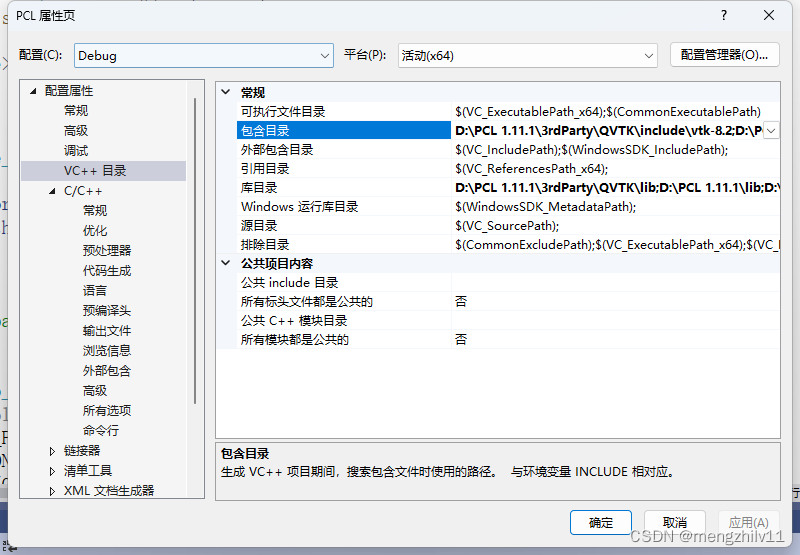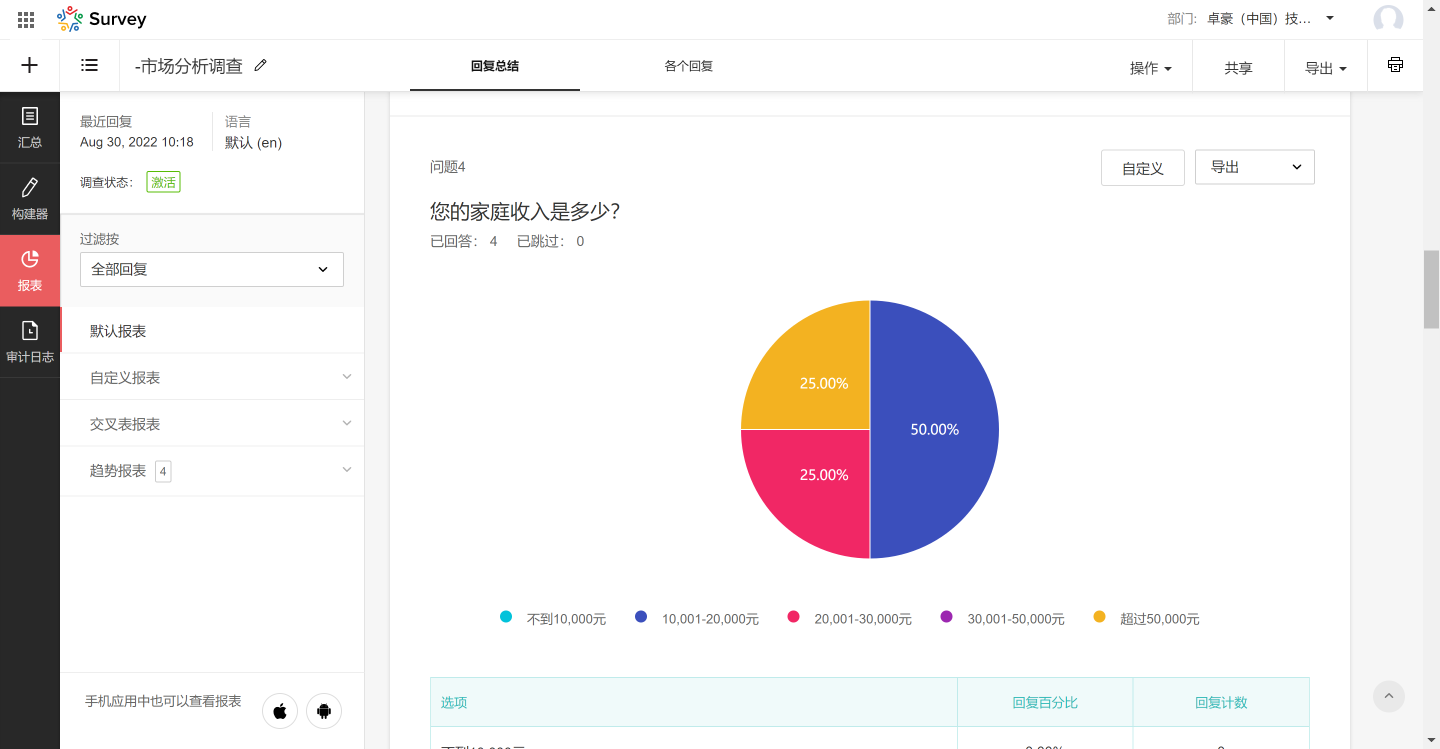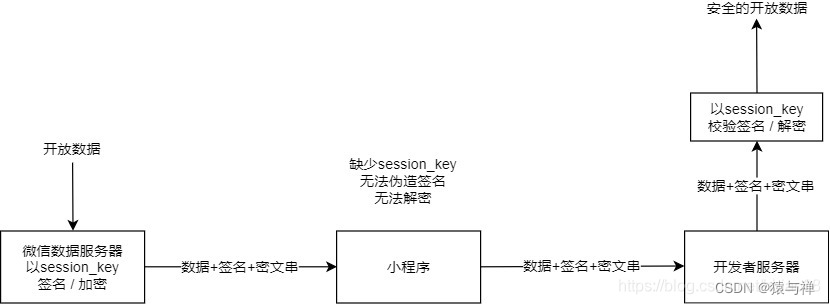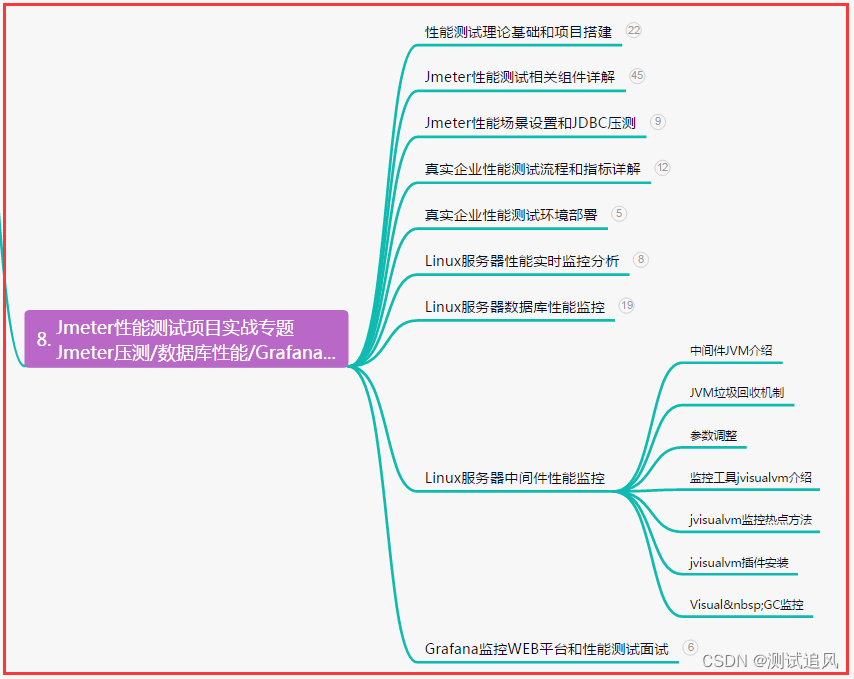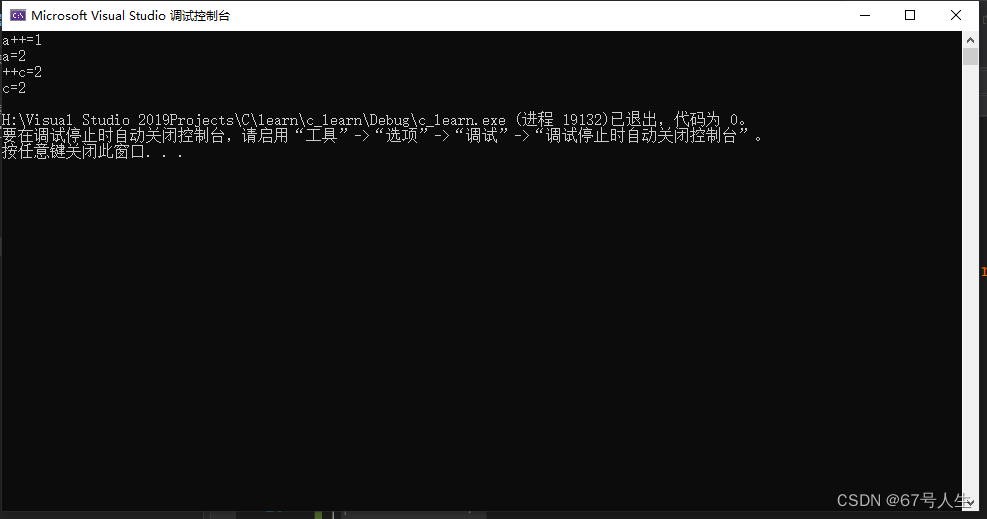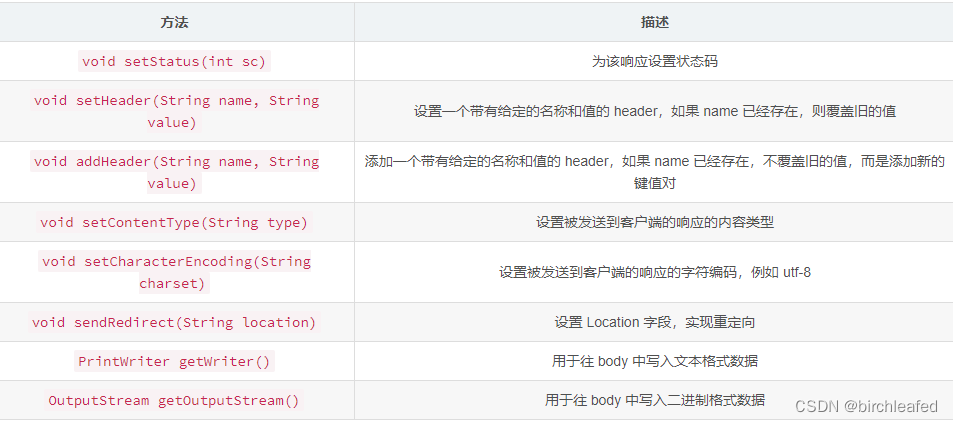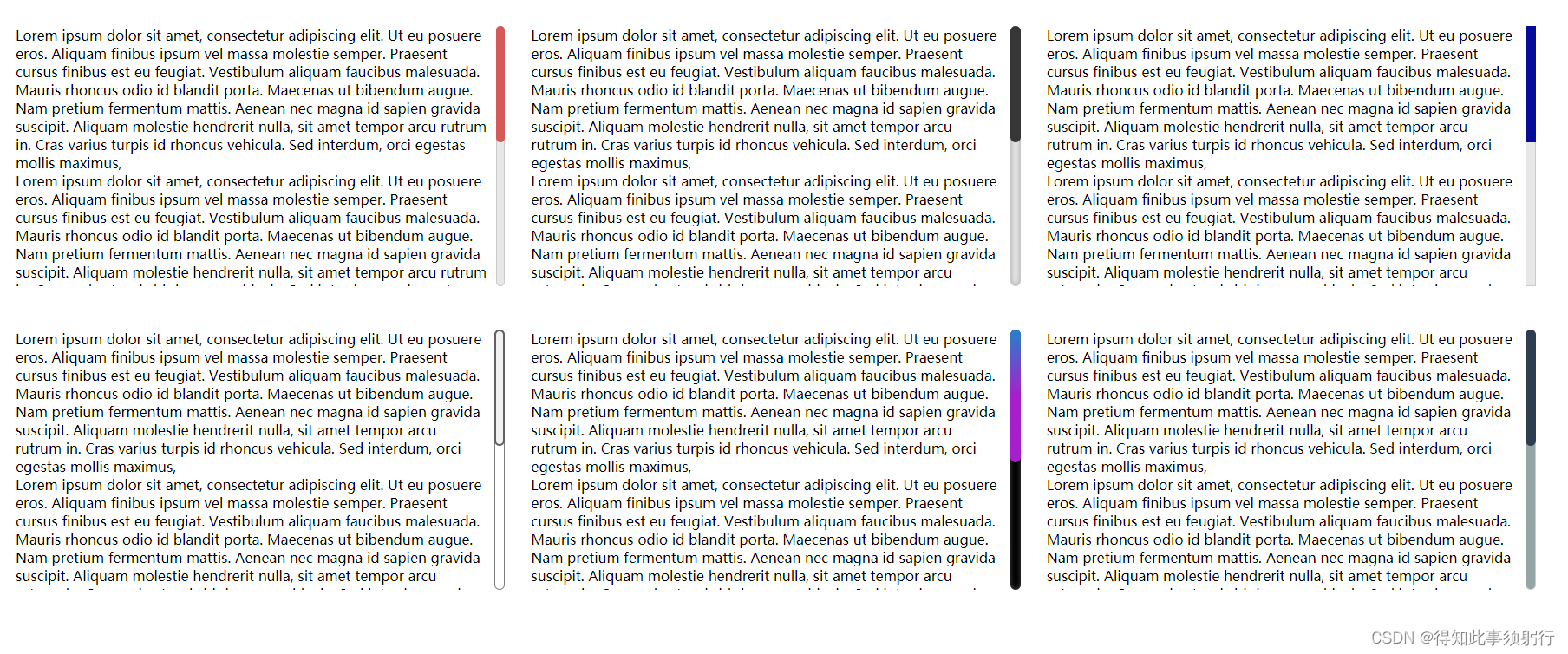public class Husband {
private String name;
private Wife wife;
public void setName(String name) {
this.name = name;
}
public String getName() {
return name;
}
public void setWife(Wife wife) {
this.wife = wife;
}
// toString()方法重写时需要注意:不能直接输出wife,输出wife.getName()。要不然会出现递归导致的栈内存溢出错误。
@Override
public String toString() {
return "Husband{" +
"name='" + name + '\'' +
", wife=" + wife.getName() +
'}';
}
}public class Wife {
private String name;
private Husband husband;
public void setName(String name) {
this.name = name;
}
public String getName() {
return name;
}
public void setHusband(Husband husband) {
this.husband = husband;
}
// toString()方法重写时需要注意:不能直接输出husband,输出husband.getName()。要不然会出现递归导致的栈内存溢出错误。
@Override
public String toString() {
return "Wife{" +
"name='" + name + '\'' +
", husband=" + husband.getName() +
'}';
}
}
配置文件,spring.xml
<beans xmlns="http://www.springframework.org/schema/beans"
xmlns:xsi="http://www.w3.org/2001/XMLSchema-instance"
xsi:schemaLocation="http://www.springframework.org/schema/beans
http://www.springframework.org/schema/beans/spring-beans.xsd">
<!-- singleton + setter模式下的循环依赖是没有任何问题的。 -->
<!-- singleton表示在整个Spring容器当中是单例的,独一无二的对象。 -->
<!--
在singleton + setter模式下,为什么循环依赖不会出现问题,Spring是如何应对的?
主要的原因是,在这种模式下Spring对Bean的管理主要分为清晰的两个阶段:
第一个阶段:在Spring容器加载的时候,实例化Bean,只要其中任意一个Bean实例化之后,
马上进行 “曝光”【不等属性赋值就曝光】
第二个阶段:Bean“曝光”之后,再进行属性的赋值(调用set方法。)。
核心解决方案是:实例化对象和对象的属性赋值分为两个阶段来完成的。
注意:只有在scope是singleton的情况下,Bean才会采取提前“曝光”的措施。
-->
<bean id="husbandBean" class="com.example.demo.bean.Husband" scope="singleton">
<property name="name" value="张三"/>
<property name="wife" ref="wifeBean"/>
</bean>
<bean id="wifeBean" class="com.example.demo.bean.Wife" scope="singleton">
<property name="name" value="小花"/>
<property name="husband" ref="husbandBean"/>
</bean>
<!-- 在prototype + setter模式下的循环依赖,存在问题,会出现异常! -->
<!-- BeanCurrentlyInCreationException 当前的Bean正在处于创建中异常。。。 -->
<!-- 注意:当两个bean的scope都是prototype的时候,才会出现异常。如果其中任意一个是singleton的,就不会出现异常。 -->
<!-- <bean id="husbandBean" class="com.example.demo.bean.Husband" scope="prototype">
<property name="name" value="张三"/>
<property name="wife" ref="wifeBean"/>
</bean>
<bean id="wifeBean" class="com.example.demo.bean.Wife" scope="prototype">
<property name="name" value="小花"/>
<property name="husband" ref="husbandBean"/>
</bean> -->
</beans>test
public class CircularDependencyTest {
@Test
public void testSingletonAndSet(){
ApplicationContext applicationContext = new ClassPathXmlApplicationContext("spring.xml");
Husband husbandBean = applicationContext.getBean("husbandBean", Husband.class);
Wife wifeBean = applicationContext.getBean("wifeBean", Wife.class);
System.out.println(husbandBean);
System.out.println(wifeBean);
}
}test result:
在singleton + set 模式下,可以解决循环依赖问题

2个bean 中只要有一个是 单例就没有问题
2个bean 都是 prototype 会出错
A(Husband)
B(Wife)
1.当 A,B 2个类都是singleton时,只有a,b 2个对象,没有问题。
2.当A 为singleton(实例对象为a),B为prototype时,创建a后,创建一个b,a.wife指向对象b,b.husband指向唯一的A实例对象,此时只涉及a,b 2个对象,没有问题。
3.当 A,B 均为prototype时,创建对象a1, 然后创建对象b1,a1.wife指向对象b1,b1.husband需要指向一个A 的实例对象,A 为 prototype ,因此,将创建一个新的对象a2,b1.husband指向a2,a2.wife需要指向一个B的实例对象,B 为 prototype,因此,将创建一个新的对象b2,a2.wife指向b2,如此下去将无穷无尽也,因此 都是 prototype 会出错
Spring set + singleton模式下 怎样解决循环依赖?
原因在于:这种方式可以做到将“实例化Bean”和“给Bean属性赋值”这两个动作分开去完成。
实例化Bean的时候:调用无参数构造方法来完成。此时可以先不给属性赋值,可以提前将该Bean对象“曝光”给外界。
给Bean属性赋值的时候:调用setter方法来完成。
Bean都是单例的,我们可以先把所有的单例Bean实例化出来,放到一个集合当中(我们可以称之为缓存),所有的单例Bean全部实例化完成之后,以后我们再调用setter方法给属性赋值。这样就解决了循环依赖的问题。
Spring使用了三级缓存的机制
源码
/*
* Copyright 2002-2020 the original author or authors.
*
* Licensed under the Apache License, Version 2.0 (the "License");
* you may not use this file except in compliance with the License.
* You may obtain a copy of the License at
*
* https://www.apache.org/licenses/LICENSE-2.0
*
* Unless required by applicable law or agreed to in writing, software
* distributed under the License is distributed on an "AS IS" BASIS,
* WITHOUT WARRANTIES OR CONDITIONS OF ANY KIND, either express or implied.
* See the License for the specific language governing permissions and
* limitations under the License.
*/
package org.springframework.beans.factory.support;
import java.util.Collections;
import java.util.HashMap;
import java.util.HashSet;
import java.util.Iterator;
import java.util.LinkedHashMap;
import java.util.LinkedHashSet;
import java.util.Map;
import java.util.Set;
import java.util.concurrent.ConcurrentHashMap;
import org.springframework.beans.factory.BeanCreationException;
import org.springframework.beans.factory.BeanCreationNotAllowedException;
import org.springframework.beans.factory.BeanCurrentlyInCreationException;
import org.springframework.beans.factory.DisposableBean;
import org.springframework.beans.factory.ObjectFactory;
import org.springframework.beans.factory.config.SingletonBeanRegistry;
import org.springframework.core.SimpleAliasRegistry;
import org.springframework.lang.Nullable;
import org.springframework.util.Assert;
import org.springframework.util.StringUtils;
/**
* Generic registry for shared bean instances, implementing the
* {@link org.springframework.beans.factory.config.SingletonBeanRegistry}.
* Allows for registering singleton instances that should be shared
* for all callers of the registry, to be obtained via bean name.
*
* <p>Also supports registration of
* {@link org.springframework.beans.factory.DisposableBean} instances,
* (which might or might not correspond to registered singletons),
* to be destroyed on shutdown of the registry. Dependencies between
* beans can be registered to enforce an appropriate shutdown order.
*
* <p>This class mainly serves as base class for
* {@link org.springframework.beans.factory.BeanFactory} implementations,
* factoring out the common management of singleton bean instances. Note that
* the {@link org.springframework.beans.factory.config.ConfigurableBeanFactory}
* interface extends the {@link SingletonBeanRegistry} interface.
*
* <p>Note that this class assumes neither a bean definition concept
* nor a specific creation process for bean instances, in contrast to
* {@link AbstractBeanFactory} and {@link DefaultListableBeanFactory}
* (which inherit from it). Can alternatively also be used as a nested
* helper to delegate to.
*
* @author Juergen Hoeller
* @since 2.0
* @see #registerSingleton
* @see #registerDisposableBean
* @see org.springframework.beans.factory.DisposableBean
* @see org.springframework.beans.factory.config.ConfigurableBeanFactory
*/
public class DefaultSingletonBeanRegistry extends SimpleAliasRegistry implements SingletonBeanRegistry {
/** Maximum number of suppressed exceptions to preserve. */
private static final int SUPPRESSED_EXCEPTIONS_LIMIT = 100;
/** Cache of singleton objects: bean name to bean instance. */
private final Map<String, Object> singletonObjects = new ConcurrentHashMap<>(256);
/** Cache of singleton factories: bean name to ObjectFactory. */
private final Map<String, ObjectFactory<?>> singletonFactories = new HashMap<>(16);
/** Cache of early singleton objects: bean name to bean instance. */
private final Map<String, Object> earlySingletonObjects = new ConcurrentHashMap<>(16);
/** Set of registered singletons, containing the bean names in registration order. */
private final Set<String> registeredSingletons = new LinkedHashSet<>(256);
/** Names of beans that are currently in creation. */
private final Set<String> singletonsCurrentlyInCreation =
Collections.newSetFromMap(new ConcurrentHashMap<>(16));
/** Names of beans currently excluded from in creation checks. */
private final Set<String> inCreationCheckExclusions =
Collections.newSetFromMap(new ConcurrentHashMap<>(16));
/** Collection of suppressed Exceptions, available for associating related causes. */
@Nullable
private Set<Exception> suppressedExceptions;
/** Flag that indicates whether we're currently within destroySingletons. */
private boolean singletonsCurrentlyInDestruction = false;
/** Disposable bean instances: bean name to disposable instance. */
private final Map<String, Object> disposableBeans = new LinkedHashMap<>();
/** Map between containing bean names: bean name to Set of bean names that the bean contains. */
private final Map<String, Set<String>> containedBeanMap = new ConcurrentHashMap<>(16);
/** Map between dependent bean names: bean name to Set of dependent bean names. */
private final Map<String, Set<String>> dependentBeanMap = new ConcurrentHashMap<>(64);
/** Map between depending bean names: bean name to Set of bean names for the bean's dependencies. */
private final Map<String, Set<String>> dependenciesForBeanMap = new ConcurrentHashMap<>(64);
@Override
public void registerSingleton(String beanName, Object singletonObject) throws IllegalStateException {
Assert.notNull(beanName, "Bean name must not be null");
Assert.notNull(singletonObject, "Singleton object must not be null");
synchronized (this.singletonObjects) {
Object oldObject = this.singletonObjects.get(beanName);
if (oldObject != null) {
throw new IllegalStateException("Could not register object [" + singletonObject +
"] under bean name '" + beanName + "': there is already object [" + oldObject + "] bound");
}
addSingleton(beanName, singletonObject);
}
}
/**
* Add the given singleton object to the singleton cache of this factory.
* <p>To be called for eager registration of singletons.
* @param beanName the name of the bean
* @param singletonObject the singleton object
*/
protected void addSingleton(String beanName, Object singletonObject) {
synchronized (this.singletonObjects) {
this.singletonObjects.put(beanName, singletonObject);
this.singletonFactories.remove(beanName);
this.earlySingletonObjects.remove(beanName);
this.registeredSingletons.add(beanName);
}
}
/**
* Add the given singleton factory for building the specified singleton
* if necessary.
* <p>To be called for eager registration of singletons, e.g. to be able to
* resolve circular references.
* @param beanName the name of the bean
* @param singletonFactory the factory for the singleton object
*/
protected void addSingletonFactory(String beanName, ObjectFactory<?> singletonFactory) {
Assert.notNull(singletonFactory, "Singleton factory must not be null");
synchronized (this.singletonObjects) {
if (!this.singletonObjects.containsKey(beanName)) {
this.singletonFactories.put(beanName, singletonFactory);
this.earlySingletonObjects.remove(beanName);
this.registeredSingletons.add(beanName);
}
}
}
@Override
@Nullable
public Object getSingleton(String beanName) {
return getSingleton(beanName, true);
}
/**
* Return the (raw) singleton object registered under the given name.
* <p>Checks already instantiated singletons and also allows for an early
* reference to a currently created singleton (resolving a circular reference).
* @param beanName the name of the bean to look for
* @param allowEarlyReference whether early references should be created or not
* @return the registered singleton object, or {@code null} if none found
*/
@Nullable
protected Object getSingleton(String beanName, boolean allowEarlyReference) {
// Quick check for existing instance without full singleton lock
Object singletonObject = this.singletonObjects.get(beanName);
if (singletonObject == null && isSingletonCurrentlyInCreation(beanName)) {
singletonObject = this.earlySingletonObjects.get(beanName);
if (singletonObject == null && allowEarlyReference) {
synchronized (this.singletonObjects) {
// Consistent creation of early reference within full singleton lock
singletonObject = this.singletonObjects.get(beanName);
if (singletonObject == null) {
singletonObject = this.earlySingletonObjects.get(beanName);
if (singletonObject == null) {
ObjectFactory<?> singletonFactory = this.singletonFactories.get(beanName);
if (singletonFactory != null) {
singletonObject = singletonFactory.getObject();
this.earlySingletonObjects.put(beanName, singletonObject);
this.singletonFactories.remove(beanName);
}
}
}
}
}
}
return singletonObject;
}
/**
* Return the (raw) singleton object registered under the given name,
* creating and registering a new one if none registered yet.
* @param beanName the name of the bean
* @param singletonFactory the ObjectFactory to lazily create the singleton
* with, if necessary
* @return the registered singleton object
*/
public Object getSingleton(String beanName, ObjectFactory<?> singletonFactory) {
Assert.notNull(beanName, "Bean name must not be null");
synchronized (this.singletonObjects) {
Object singletonObject = this.singletonObjects.get(beanName);
if (singletonObject == null) {
if (this.singletonsCurrentlyInDestruction) {
throw new BeanCreationNotAllowedException(beanName,
"Singleton bean creation not allowed while singletons of this factory are in destruction " +
"(Do not request a bean from a BeanFactory in a destroy method implementation!)");
}
if (logger.isDebugEnabled()) {
logger.debug("Creating shared instance of singleton bean '" + beanName + "'");
}
beforeSingletonCreation(beanName);
boolean newSingleton = false;
boolean recordSuppressedExceptions = (this.suppressedExceptions == null);
if (recordSuppressedExceptions) {
this.suppressedExceptions = new LinkedHashSet<>();
}
try {
singletonObject = singletonFactory.getObject();
newSingleton = true;
}
catch (IllegalStateException ex) {
// Has the singleton object implicitly appeared in the meantime ->
// if yes, proceed with it since the exception indicates that state.
singletonObject = this.singletonObjects.get(beanName);
if (singletonObject == null) {
throw ex;
}
}
catch (BeanCreationException ex) {
if (recordSuppressedExceptions) {
for (Exception suppressedException : this.suppressedExceptions) {
ex.addRelatedCause(suppressedException);
}
}
throw ex;
}
finally {
if (recordSuppressedExceptions) {
this.suppressedExceptions = null;
}
afterSingletonCreation(beanName);
}
if (newSingleton) {
addSingleton(beanName, singletonObject);
}
}
return singletonObject;
}
}
/**
* Register an exception that happened to get suppressed during the creation of a
* singleton bean instance, e.g. a temporary circular reference resolution problem.
* <p>The default implementation preserves any given exception in this registry's
* collection of suppressed exceptions, up to a limit of 100 exceptions, adding
* them as related causes to an eventual top-level {@link BeanCreationException}.
* @param ex the Exception to register
* @see BeanCreationException#getRelatedCauses()
*/
protected void onSuppressedException(Exception ex) {
synchronized (this.singletonObjects) {
if (this.suppressedExceptions != null && this.suppressedExceptions.size() < SUPPRESSED_EXCEPTIONS_LIMIT) {
this.suppressedExceptions.add(ex);
}
}
}
/**
* Remove the bean with the given name from the singleton cache of this factory,
* to be able to clean up eager registration of a singleton if creation failed.
* @param beanName the name of the bean
* @see #getSingletonMutex()
*/
protected void removeSingleton(String beanName) {
synchronized (this.singletonObjects) {
this.singletonObjects.remove(beanName);
this.singletonFactories.remove(beanName);
this.earlySingletonObjects.remove(beanName);
this.registeredSingletons.remove(beanName);
}
}
@Override
public boolean containsSingleton(String beanName) {
return this.singletonObjects.containsKey(beanName);
}
@Override
public String[] getSingletonNames() {
synchronized (this.singletonObjects) {
return StringUtils.toStringArray(this.registeredSingletons);
}
}
@Override
public int getSingletonCount() {
synchronized (this.singletonObjects) {
return this.registeredSingletons.size();
}
}
public void setCurrentlyInCreation(String beanName, boolean inCreation) {
Assert.notNull(beanName, "Bean name must not be null");
if (!inCreation) {
this.inCreationCheckExclusions.add(beanName);
}
else {
this.inCreationCheckExclusions.remove(beanName);
}
}
public boolean isCurrentlyInCreation(String beanName) {
Assert.notNull(beanName, "Bean name must not be null");
return (!this.inCreationCheckExclusions.contains(beanName) && isActuallyInCreation(beanName));
}
protected boolean isActuallyInCreation(String beanName) {
return isSingletonCurrentlyInCreation(beanName);
}
/**
* Return whether the specified singleton bean is currently in creation
* (within the entire factory).
* @param beanName the name of the bean
*/
public boolean isSingletonCurrentlyInCreation(String beanName) {
return this.singletonsCurrentlyInCreation.contains(beanName);
}
/**
* Callback before singleton creation.
* <p>The default implementation register the singleton as currently in creation.
* @param beanName the name of the singleton about to be created
* @see #isSingletonCurrentlyInCreation
*/
protected void beforeSingletonCreation(String beanName) {
if (!this.inCreationCheckExclusions.contains(beanName) && !this.singletonsCurrentlyInCreation.add(beanName)) {
throw new BeanCurrentlyInCreationException(beanName);
}
}
/**
* Callback after singleton creation.
* <p>The default implementation marks the singleton as not in creation anymore.
* @param beanName the name of the singleton that has been created
* @see #isSingletonCurrentlyInCreation
*/
protected void afterSingletonCreation(String beanName) {
if (!this.inCreationCheckExclusions.contains(beanName) && !this.singletonsCurrentlyInCreation.remove(beanName)) {
throw new IllegalStateException("Singleton '" + beanName + "' isn't currently in creation");
}
}
/**
* Add the given bean to the list of disposable beans in this registry.
* <p>Disposable beans usually correspond to registered singletons,
* matching the bean name but potentially being a different instance
* (for example, a DisposableBean adapter for a singleton that does not
* naturally implement Spring's DisposableBean interface).
* @param beanName the name of the bean
* @param bean the bean instance
*/
public void registerDisposableBean(String beanName, DisposableBean bean) {
synchronized (this.disposableBeans) {
this.disposableBeans.put(beanName, bean);
}
}
/**
* Register a containment relationship between two beans,
* e.g. between an inner bean and its containing outer bean.
* <p>Also registers the containing bean as dependent on the contained bean
* in terms of destruction order.
* @param containedBeanName the name of the contained (inner) bean
* @param containingBeanName the name of the containing (outer) bean
* @see #registerDependentBean
*/
public void registerContainedBean(String containedBeanName, String containingBeanName) {
synchronized (this.containedBeanMap) {
Set<String> containedBeans =
this.containedBeanMap.computeIfAbsent(containingBeanName, k -> new LinkedHashSet<>(8));
if (!containedBeans.add(containedBeanName)) {
return;
}
}
registerDependentBean(containedBeanName, containingBeanName);
}
/**
* Register a dependent bean for the given bean,
* to be destroyed before the given bean is destroyed.
* @param beanName the name of the bean
* @param dependentBeanName the name of the dependent bean
*/
public void registerDependentBean(String beanName, String dependentBeanName) {
String canonicalName = canonicalName(beanName);
synchronized (this.dependentBeanMap) {
Set<String> dependentBeans =
this.dependentBeanMap.computeIfAbsent(canonicalName, k -> new LinkedHashSet<>(8));
if (!dependentBeans.add(dependentBeanName)) {
return;
}
}
synchronized (this.dependenciesForBeanMap) {
Set<String> dependenciesForBean =
this.dependenciesForBeanMap.computeIfAbsent(dependentBeanName, k -> new LinkedHashSet<>(8));
dependenciesForBean.add(canonicalName);
}
}
/**
* Determine whether the specified dependent bean has been registered as
* dependent on the given bean or on any of its transitive dependencies.
* @param beanName the name of the bean to check
* @param dependentBeanName the name of the dependent bean
* @since 4.0
*/
protected boolean isDependent(String beanName, String dependentBeanName) {
synchronized (this.dependentBeanMap) {
return isDependent(beanName, dependentBeanName, null);
}
}
private boolean isDependent(String beanName, String dependentBeanName, @Nullable Set<String> alreadySeen) {
if (alreadySeen != null && alreadySeen.contains(beanName)) {
return false;
}
String canonicalName = canonicalName(beanName);
Set<String> dependentBeans = this.dependentBeanMap.get(canonicalName);
if (dependentBeans == null) {
return false;
}
if (dependentBeans.contains(dependentBeanName)) {
return true;
}
for (String transitiveDependency : dependentBeans) {
if (alreadySeen == null) {
alreadySeen = new HashSet<>();
}
alreadySeen.add(beanName);
if (isDependent(transitiveDependency, dependentBeanName, alreadySeen)) {
return true;
}
}
return false;
}
/**
* Determine whether a dependent bean has been registered for the given name.
* @param beanName the name of the bean to check
*/
protected boolean hasDependentBean(String beanName) {
return this.dependentBeanMap.containsKey(beanName);
}
/**
* Return the names of all beans which depend on the specified bean, if any.
* @param beanName the name of the bean
* @return the array of dependent bean names, or an empty array if none
*/
public String[] getDependentBeans(String beanName) {
Set<String> dependentBeans = this.dependentBeanMap.get(beanName);
if (dependentBeans == null) {
return new String[0];
}
synchronized (this.dependentBeanMap) {
return StringUtils.toStringArray(dependentBeans);
}
}
/**
* Return the names of all beans that the specified bean depends on, if any.
* @param beanName the name of the bean
* @return the array of names of beans which the bean depends on,
* or an empty array if none
*/
public String[] getDependenciesForBean(String beanName) {
Set<String> dependenciesForBean = this.dependenciesForBeanMap.get(beanName);
if (dependenciesForBean == null) {
return new String[0];
}
synchronized (this.dependenciesForBeanMap) {
return StringUtils.toStringArray(dependenciesForBean);
}
}
public void destroySingletons() {
if (logger.isTraceEnabled()) {
logger.trace("Destroying singletons in " + this);
}
synchronized (this.singletonObjects) {
this.singletonsCurrentlyInDestruction = true;
}
String[] disposableBeanNames;
synchronized (this.disposableBeans) {
disposableBeanNames = StringUtils.toStringArray(this.disposableBeans.keySet());
}
for (int i = disposableBeanNames.length - 1; i >= 0; i--) {
destroySingleton(disposableBeanNames[i]);
}
this.containedBeanMap.clear();
this.dependentBeanMap.clear();
this.dependenciesForBeanMap.clear();
clearSingletonCache();
}
/**
* Clear all cached singleton instances in this registry.
* @since 4.3.15
*/
protected void clearSingletonCache() {
synchronized (this.singletonObjects) {
this.singletonObjects.clear();
this.singletonFactories.clear();
this.earlySingletonObjects.clear();
this.registeredSingletons.clear();
this.singletonsCurrentlyInDestruction = false;
}
}
/**
* Destroy the given bean. Delegates to {@code destroyBean}
* if a corresponding disposable bean instance is found.
* @param beanName the name of the bean
* @see #destroyBean
*/
public void destroySingleton(String beanName) {
// Remove a registered singleton of the given name, if any.
removeSingleton(beanName);
// Destroy the corresponding DisposableBean instance.
DisposableBean disposableBean;
synchronized (this.disposableBeans) {
disposableBean = (DisposableBean) this.disposableBeans.remove(beanName);
}
destroyBean(beanName, disposableBean);
}
/**
* Destroy the given bean. Must destroy beans that depend on the given
* bean before the bean itself. Should not throw any exceptions.
* @param beanName the name of the bean
* @param bean the bean instance to destroy
*/
protected void destroyBean(String beanName, @Nullable DisposableBean bean) {
// Trigger destruction of dependent beans first...
Set<String> dependencies;
synchronized (this.dependentBeanMap) {
// Within full synchronization in order to guarantee a disconnected Set
dependencies = this.dependentBeanMap.remove(beanName);
}
if (dependencies != null) {
if (logger.isTraceEnabled()) {
logger.trace("Retrieved dependent beans for bean '" + beanName + "': " + dependencies);
}
for (String dependentBeanName : dependencies) {
destroySingleton(dependentBeanName);
}
}
// Actually destroy the bean now...
if (bean != null) {
try {
bean.destroy();
}
catch (Throwable ex) {
if (logger.isWarnEnabled()) {
logger.warn("Destruction of bean with name '" + beanName + "' threw an exception", ex);
}
}
}
// Trigger destruction of contained beans...
Set<String> containedBeans;
synchronized (this.containedBeanMap) {
// Within full synchronization in order to guarantee a disconnected Set
containedBeans = this.containedBeanMap.remove(beanName);
}
if (containedBeans != null) {
for (String containedBeanName : containedBeans) {
destroySingleton(containedBeanName);
}
}
// Remove destroyed bean from other beans' dependencies.
synchronized (this.dependentBeanMap) {
for (Iterator<Map.Entry<String, Set<String>>> it = this.dependentBeanMap.entrySet().iterator(); it.hasNext();) {
Map.Entry<String, Set<String>> entry = it.next();
Set<String> dependenciesToClean = entry.getValue();
dependenciesToClean.remove(beanName);
if (dependenciesToClean.isEmpty()) {
it.remove();
}
}
}
// Remove destroyed bean's prepared dependency information.
this.dependenciesForBeanMap.remove(beanName);
}
/**
* Exposes the singleton mutex to subclasses and external collaborators.
* <p>Subclasses should synchronize on the given Object if they perform
* any sort of extended singleton creation phase. In particular, subclasses
* should <i>not</i> have their own mutexes involved in singleton creation,
* to avoid the potential for deadlocks in lazy-init situations.
*/
@Override
public final Object getSingletonMutex() {
return this.singletonObjects;
}
}
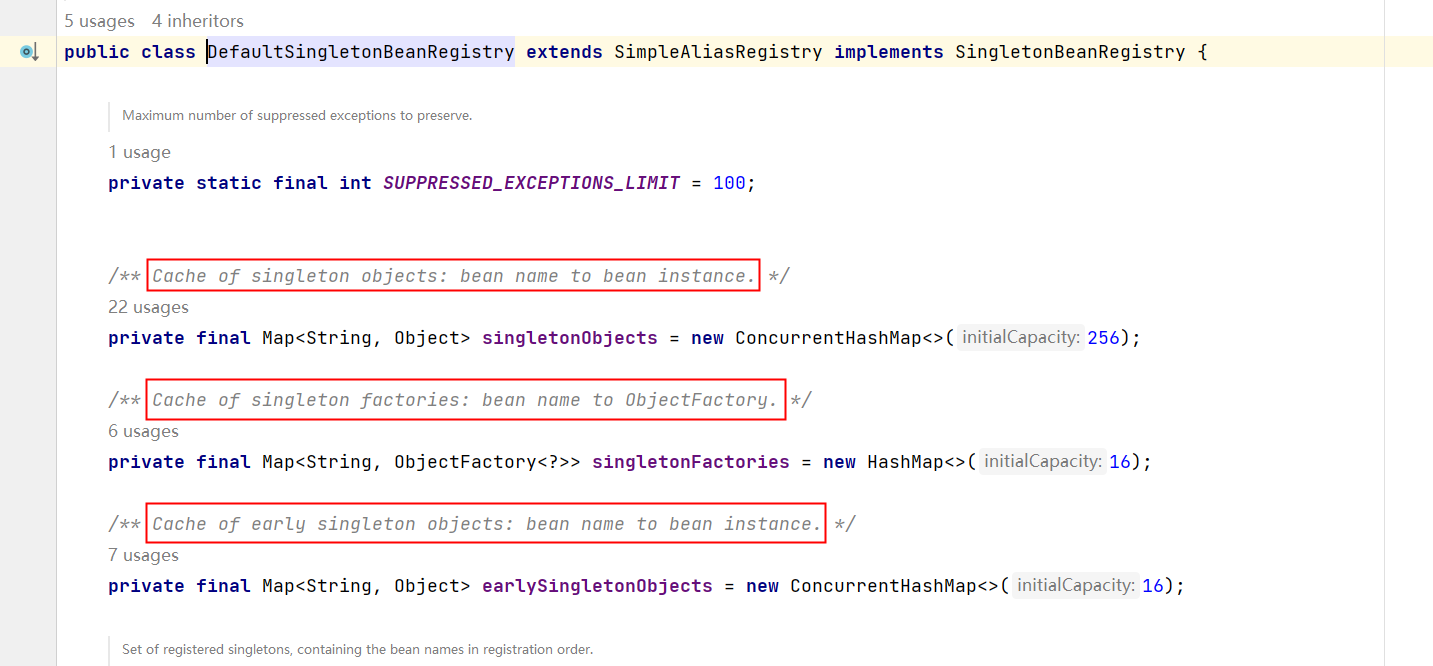
在以上类中包含三个重要的属性:
Cache of singleton objects: bean name to bean instance. 单例对象的缓存:key存储bean名称,value存储Bean对象【一级缓存】
Cache of early singleton objects: bean name to bean instance. 早期(Bean 对象已经实例化,但还未被完全初始化)单例对象的缓存:key存储bean名称,value存储早期的Bean对象【二级缓存】
Cache of singleton factories: bean name to ObjectFactory. 单例工厂缓存:key存储bean名称,value存储该Bean对应的ObjectFactory对象【三级缓存】
这三个缓存其实本质上是三个Map集合。
先将对象实例化,还未给属性赋值。
实例化后的对象缓存到 二级缓存,
调用setter方法给属性赋值时,先从一级缓存查找 初始化完成的单例对象,若未找到,再查寻二级缓存,再查找三级缓存
该类中有这样一个方法addSingletonFactory(),这个方法的作用是:将创建Bean对象的ObjectFactory对象提前曝光。


spring会先从一级缓存中获取Bean,如果获取不到,则从二级缓存中获取Bean,如果二级缓存还是获取不到,则从三级缓存中获取之前曝光的ObjectFactory对象,通过ObjectFactory对象获取Bean实例
Spring只能解决setter方法注入的单例bean之间的循环依赖。ClassA依赖ClassB,ClassB又依赖ClassA,形成依赖闭环。Spring在创建ClassA对象后,不需要等给属性赋值,直接将其曝光到bean缓存当中。在解析ClassA的属性时,又发现依赖于ClassB,再次去获取ClassB,当解析ClassB的属性时,又发现需要ClassA的属性,但此时的ClassA已经被提前曝光加入了正在创建的bean的缓存中,则无需创建新的的ClassA的实例,直接从缓存中获取即可。从而解决循环依赖问题。
AbstractAutowireCapableBeanFactory 中的 doCreateBean 方法(创建bean实例)
/**
* Actually create the specified bean. Pre-creation processing has already happened
* at this point, e.g. checking {@code postProcessBeforeInstantiation} callbacks.
* <p>Differentiates between default bean instantiation, use of a
* factory method, and autowiring a constructor.
* @param beanName the name of the bean
* @param mbd the merged bean definition for the bean
* @param args explicit arguments to use for constructor or factory method invocation
* @return a new instance of the bean
* @throws BeanCreationException if the bean could not be created
* @see #instantiateBean
* @see #instantiateUsingFactoryMethod
* @see #autowireConstructor
*/
protected Object doCreateBean(String beanName, RootBeanDefinition mbd, @Nullable Object[] args)
throws BeanCreationException {
// Instantiate the bean.
BeanWrapper instanceWrapper = null;
if (mbd.isSingleton()) {
instanceWrapper = this.factoryBeanInstanceCache.remove(beanName);
}
if (instanceWrapper == null) {
instanceWrapper = createBeanInstance(beanName, mbd, args);
}
Object bean = instanceWrapper.getWrappedInstance();
Class<?> beanType = instanceWrapper.getWrappedClass();
if (beanType != NullBean.class) {
mbd.resolvedTargetType = beanType;
}
// Allow post-processors to modify the merged bean definition.
synchronized (mbd.postProcessingLock) {
if (!mbd.postProcessed) {
try {
applyMergedBeanDefinitionPostProcessors(mbd, beanType, beanName);
}
catch (Throwable ex) {
throw new BeanCreationException(mbd.getResourceDescription(), beanName,
"Post-processing of merged bean definition failed", ex);
}
mbd.markAsPostProcessed();
}
}
// Eagerly cache singletons to be able to resolve circular references
// even when triggered by lifecycle interfaces like BeanFactoryAware.
boolean earlySingletonExposure = (mbd.isSingleton() && this.allowCircularReferences &&
isSingletonCurrentlyInCreation(beanName));
if (earlySingletonExposure) {
if (logger.isTraceEnabled()) {
logger.trace("Eagerly caching bean '" + beanName +
"' to allow for resolving potential circular references");
}
addSingletonFactory(beanName, () -> getEarlyBeanReference(beanName, mbd, bean));
}
// Initialize the bean instance.
Object exposedObject = bean;
try {
populateBean(beanName, mbd, instanceWrapper);
exposedObject = initializeBean(beanName, exposedObject, mbd);
}
catch (Throwable ex) {
if (ex instanceof BeanCreationException bce && beanName.equals(bce.getBeanName())) {
throw bce;
}
else {
throw new BeanCreationException(mbd.getResourceDescription(), beanName, ex.getMessage(), ex);
}
}
if (earlySingletonExposure) {
Object earlySingletonReference = getSingleton(beanName, false);
if (earlySingletonReference != null) {
if (exposedObject == bean) {
exposedObject = earlySingletonReference;
}
else if (!this.allowRawInjectionDespiteWrapping && hasDependentBean(beanName)) {
String[] dependentBeans = getDependentBeans(beanName);
Set<String> actualDependentBeans = new LinkedHashSet<>(dependentBeans.length);
for (String dependentBean : dependentBeans) {
if (!removeSingletonIfCreatedForTypeCheckOnly(dependentBean)) {
actualDependentBeans.add(dependentBean);
}
}
if (!actualDependentBeans.isEmpty()) {
throw new BeanCurrentlyInCreationException(beanName,
"Bean with name '" + beanName + "' has been injected into other beans [" +
StringUtils.collectionToCommaDelimitedString(actualDependentBeans) +
"] in its raw version as part of a circular reference, but has eventually been " +
"wrapped. This means that said other beans do not use the final version of the " +
"bean. This is often the result of over-eager type matching - consider using " +
"'getBeanNamesForType' with the 'allowEagerInit' flag turned off, for example.");
}
}
}
}
// Register bean as disposable.
try {
registerDisposableBeanIfNecessary(beanName, bean, mbd);
}
catch (BeanDefinitionValidationException ex) {
throw new BeanCreationException(
mbd.getResourceDescription(), beanName, "Invalid destruction signature", ex);
}
return exposedObject;
}
// Eagerly cache singletons to be able to resolve circular references
// even when triggered by lifecycle interfaces like BeanFactoryAware.
boolean earlySingletonExposure = (mbd.isSingleton() && this.allowCircularReferences &&
isSingletonCurrentlyInCreation(beanName));
if (earlySingletonExposure) {
if (logger.isTraceEnabled()) {
logger.trace("Eagerly caching bean '" + beanName +
"' to allow for resolving potential circular references");
}
//将创建Bean对象的ObjectFactory对象提前曝光
addSingletonFactory(beanName, () -> getEarlyBeanReference(beanName, mbd, bean));
}
AbstractAutowireCapableBeanFactory extends DefaultSingletonBeanRegistry





